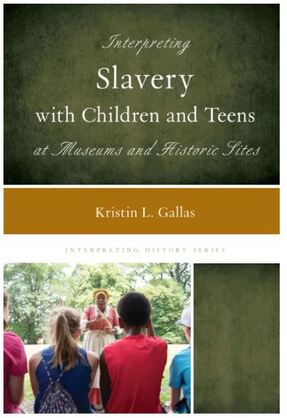Distance Learning Resources for Educators
Resources on Teaching about Slavery and the American Civil War
|
"Tongue Tied"--an article by Michele Israel from TeachingTolerance.org. This article offers tips for teaching about American slavery.
"When and How to Talk to Talk with Young Children about Enslavement"--discussion questions for educators from TeachingForChange.org. List of books about slavery, resistance, and reparations for elementary through high school students and educators from SocialJusticeBooks.org. Educator resources from the American Civil War Museum that includes primary source materials, lessons, and other links. A Guide to Wilmington's African American Heritage is a pdf version of the brochure put out the by City of Wilmington. It includes local sites, homes, and businesses that help tell the rich history of Black Wilmingtonians throughout the 19th and 20th centuries. The Interpreting Slavery website was created by several historians who provide pedagogical advice and examples of how to educate not only adults but also children and teens about slavery. While their books are intended for use by museum professionals, there is much for classroom educators within their Interpreting Slavery series of book. |
Resources on the 1898 Wilmington Massacre & Coup
"1898 race riot report" by the 1898 Wilmington Race Riot Commission (NC Office of Archives & History)
"Contested election case of Oliver H. Dockery vs. John D. Bellamy Jr." compiled and published by U.S. Government Printing office 1899
Exhibit panels on the 1898 Massacre & Coup and the Bellamy connection by staff of Bellamy Mansion Museum (pdf)
"Contested election case of Oliver H. Dockery vs. John D. Bellamy Jr." compiled and published by U.S. Government Printing office 1899
Exhibit panels on the 1898 Massacre & Coup and the Bellamy connection by staff of Bellamy Mansion Museum (pdf)
Downloadable Activity Sheets
A matching worksheet that highlights not only the Northern-born architects but also two of the enslaved artisans who helped build the entire site. (Elementary)
Extension: Research one of the jobs or one of the people from the activity sheet. Create a collage using magazines and printed images to represent your research.
Extension: Research one of the jobs or one of the people from the activity sheet. Create a collage using magazines and printed images to represent your research.
Great vocabulary building activity that introduces children to "museum" terms such as stanchion and wayfinding signs while having them practice shapes! (Lower elementary)
Extension: What if your house were to become a house museum? Where would visitors find all of these in your house museum? Create signs and put them up in your home.
Extension: What if your house were to become a house museum? Where would visitors find all of these in your house museum? Create signs and put them up in your home.
Great vocabulary building activity that introduces children to "museum" terms such as stanchion and wayfinding signs while having them practice handwriting! (Upper elementary)
Extension: Research an historic house museum in the U.S. you wish to visit. Create a visual presentation to persuade your family that includes a brief history of the site, travel maps, etc...
Extension: Research an historic house museum in the U.S. you wish to visit. Create a visual presentation to persuade your family that includes a brief history of the site, travel maps, etc...
Science anyone?? Learn about the metallic makeup of coins and try a fun at-home science experiment with pennies, vinegar, and ketchup. (Elementary-High school)
Extension: Try it with other coins and coins from different decades! What do you think will happen to a 1998 nickel? What about a 1968 penny?
Extension: Try it with other coins and coins from different decades! What do you think will happen to a 1998 nickel? What about a 1968 penny?
Time for a bit of physical education! This two-sided activity sheet gives the history of a popular 19th-century game, Graces, and includes directions to make your own set at home!
The second page includes other Victorian-era activities children enjoyed from trundling hoops to shooting jacks. (Elementary-High school)
Extension: Research other popular games and sports of the 19th-century--are any familiar? Which do you recognize and play today? Are the rules still the same?
The second page includes other Victorian-era activities children enjoyed from trundling hoops to shooting jacks. (Elementary-High school)
Extension: Research other popular games and sports of the 19th-century--are any familiar? Which do you recognize and play today? Are the rules still the same?
Get into the kitchen and create an authentic 19th-century cookie recipe while practicing fractions, measurements, and reading comprehension skills. (Elementary-High school)
Extension: What quantities would you need if you doubled the recipe? Quadrupled it? Cut it in half?
Also, research the science of baking--why is it called a science? What chemical reactions happen to make a cake rise?
Extension: What quantities would you need if you doubled the recipe? Quadrupled it? Cut it in half?
Also, research the science of baking--why is it called a science? What chemical reactions happen to make a cake rise?
Video Resources
Find more video resources, including recorded lectures, on the Museum's YouTube channel and on Preservation North Carolina's YouTube channel.
|
10-min. video made possible by the Women's Impact Network of New Hanover County.
|
36-min. video tour of the mansion and slave quarters by longtime volunteer docents.
|





